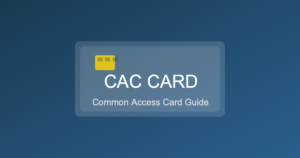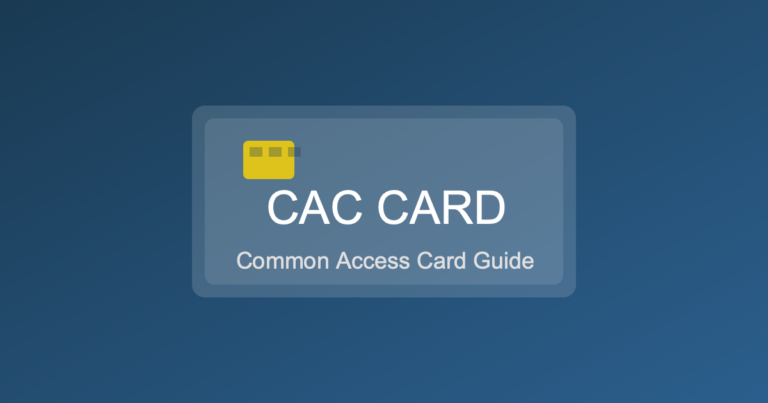DA Form 638: Complete Army Award Recommendation Guide
DA Form 638 (Recommendation for Award) is the official Army form used to recommend soldiers for awards and decorations. Whether you’re writing your first award as a new NCO or refining recommendations as a senior leader, understanding how to properly complete DA Form 638 significantly increases approval rates and ensures deserving soldiers receive appropriate recognition for their service and achievements.
This comprehensive guide walks through every section of DA Form 638, provides strong writing examples, explains the approval process, common mistakes that get awards kicked back, and timelines for different award levels.
Understanding DA Form 638
What Is DA Form 638?
DA Form 638 is the standardized Army form that documents:
- Soldier’s identifying information
- Proposed award and justification
- Specific accomplishments and timeframe
- Recommendation through chain of command
- Approval authority endorsements
When to Use DA Form 638
- Achievement awards: Army Achievement Medal (AAM), Army Commendation Medal (ARCOM)
- Service awards: Meritorious Service Medal (MSM)
- Heroism awards: Bronze Star (non-combat), Soldier’s Medal
- Impact awards: Legion of Merit
- End-of-tour awards: PCS, retirement, ETS
- Spot awards: Single act of achievement or service
Form Versions
- DA Form 638 (Apr 2006): Current version as of 2025
- Digital format: Most organizations use electronic workflow (iPerms, Army Awards System)
- PDF format: Can be manually filled but digital workflow preferred
Download from: Army Publishing Directorate (https://armypubs.army.mil) or your organization’s awards portal.
DA Form 638 Section-by-Section Guide
Section I: Administrative Data
This section contains soldier identification and award details.
1. Name (Last, First, MI)
Enter soldier’s name exactly as it appears in official records (iPERMS, ORB/ERB).
Example: SMITH, JOHN, A
2. SSN or DoD ID Number
Use 10-digit DoD ID (EDIPI) – SSN being phased out for privacy.
Example: 1234567890
3. Rank/Grade
Current rank at time of recommendation.
Example: SSG/E-6
4. Branch
MOS branch (Infantry, Signal, Medical, etc.)
Example: 25S (Satellite Communications)
5. Organization
Complete unit designation with UIC.
Example: A Co, 1-10 IN, 3rd ABCT, 4th ID
6. Duty Position
Soldier’s duty title during period of achievement.
Example: Platoon Sergeant, 2nd Platoon
7. Recommended Award
Specific award being recommended.
Examples:
- Army Achievement Medal
- Army Commendation Medal
- Meritorious Service Medal
8. Period of Service/Achievement
Exact dates covered by award.
Format: YYYYMMDD to YYYYMMDD
Example: 20240301 to 20241130 (9 months)
Guidelines by award type:
- AAM: 6-18 months typical
- ARCOM: 12-24 months typical
- MSM: 24-36 months typical
- Spot awards: Single date or brief period (days/weeks)
9. Reason for Award
Select appropriate category:
- ☐ Peacetime Achievement
- ☐ Peacetime Service
- ☐ Valor (combat heroism)
- ☐ Wartime Service
- ☐ Retirement
- ☐ Other (specify)
Most common: Peacetime Achievement or Peacetime Service for end-of-tour awards.
Section II: Proposed Citation
This is the narrative justification – the most important part of DA Form 638.
Citation Writing Guidelines
Format requirements:
- Single-spaced, justified margins
- Times New Roman, 12-point font
- AAM: 10-15 lines maximum
- ARCOM: 15-25 lines maximum
- MSM: 25-30 lines maximum
- No abbreviations (spell out rank, unit, military terms)
Citation Structure
Opening paragraph (hook):
Summarize overall impact and justify award level.
Body bullets:
3-6 specific accomplishments (AAM) or 6-10 (ARCOM/MSM) with quantified results.
Closing statement:
Reflect credit formula ending.
Strong AAM Citation Example
For exceptionally meritorious achievement as Senior Signal Analyst, 525th Expeditionary Military Intelligence Brigade, Fort Bragg, North Carolina, from March 2024 to December 2024. Sergeant Smith’s technical expertise and innovative problem-solving directly enabled 247 critical intelligence operations with zero system failures during this demanding operational cycle. His specific achievements include:
Diagnosed and repaired catastrophic satellite system failure 4 hours before major training exercise, fabricating replacement component when supply chain delayed critical part 96 hours; enabled on-time mission execution for 600-soldier event and prevented $45,000 exercise cancellation costs. Developed automated threat warning system using basic programming skills, reducing analyst workload by 65% and improving threat detection speed from 15 minutes to 2 minutes; innovation adopted by brigade and improved force protection for 2,400 personnel. Trained 31 junior analysts on new intelligence software, achieving 100% qualification rate 45 days ahead of schedule; superior training program recognized as best in division and replicated across four battalions. Volunteered to establish communications during emergency response to local tornado disaster, maintaining 24/7 operations for 168 hours and enabling coordination of 89 rescue missions; personal dedication directly contributed to evacuation of 340 civilians.
Sergeant Smith’s technical mastery, mission-focused initiative, and selfless service embody the Army values and reflect great credit upon himself, the 525th Expeditionary Military Intelligence Brigade, and the United States Army.
Strong ARCOM Citation Example
For exceptionally meritorious service as Motor Sergeant, Headquarters and Headquarters Company, 1st Battalion, 327th Infantry Regiment, 101st Airborne Division (Air Assault), Fort Campbell, Kentucky, from January 2023 to January 2025. Staff Sergeant Johnson’s visionary leadership and technical excellence revolutionized battalion maintenance operations, directly enabling 100% equipment readiness for the battalion’s Joint Readiness Training Center rotation and subsequent deployment to Eastern Europe. His sustained superior performance over 24 months includes:
Overhauled antiquated maintenance tracking system, implementing digital work order process that reduced average repair time from 14 days to 6 days and increased deadline-free rate from 73% to 96%; innovation saved 1,200 man-hours annually and earned recognition as division’s best battalion maintenance operation. Identified systemic failure pattern in Mine-Resistant Ambush Protected vehicles that had eluded diagnosis for 18 months, tracing problem to manufacturer defect in electrical harness; solution implemented across entire division and prevented estimated 45 future deadlines, saving $270,000 in replacement parts. Led 14-person maintenance team through emergency pre-deployment inspections, completing 100% of required services 30 days ahead of schedule despite receiving mission with only 45-day notice; superior planning enabled battalion to be first unit in brigade certified deployment-ready. Mentored 23 junior mechanics, developing comprehensive training program that reduced average 10-level qualification time from 24 months to 16 months; all mentees achieved fully qualified status and two earned Soldier of Quarter awards.
Served as battalion master fitness trainer, planning and executing physical training for 850 soldiers and improving battalion APFT pass rate from 87% to 97%; additionally organized and led three battalion-level Soldier wellness programs addressing financial literacy, mental health, and family support. Completed 480 hours of volunteer service with local veterans’ organization, organizing charity events that raised $15,000 for homeless veterans and personally mentoring eight transitioning soldiers through employment preparation. Represented battalion at three division-level maintenance competitions, earning first place in two events and showcasing 101st Airborne Division technical excellence to Fort Campbell garrison.
Staff Sergeant Johnson’s technical brilliance, inspirational leadership, and unwavering dedication to soldiers and mission embody the Army values and reflect great credit upon himself, the 1st Battalion, 327th Infantry Regiment, the 101st Airborne Division, and the United States Army.
Section III: Recommending Official
Immediate supervisor or commander who initiates award.
Required Information
- Name and Rank: Full name, rank/grade
- Position: Duty title
- Organization: Unit
- Signature: Wet signature or digital signature
- Date: Date signed
Who can recommend:
- Direct supervisor (typically NCO or officer one level above soldier)
- Commander (any level)
- Anyone in soldier’s chain of command
Section IV: Reviewing/Approving Officials
Chain of command endorsements from recommending official to approval authority.
Standard Routing
| Award Level | Approval Authority | Typical Routing |
|---|---|---|
| AAM | O-3 (CPT) or higher | Recommender → 1SG → Commander (approves) |
| ARCOM | O-5 (LTC) or higher | Recommender → 1SG → CO CDR → BN CSM → BN CDR (approves) |
| MSM | O-6 (COL) or higher | Through battalion → BDE CSM → BDE CDR (approves) |
| LOM | GO (BG+) | Through brigade → Division CSM → Division CDR (approves) |
Endorsement Block Format
Each reviewer signs and dates endorsement block:
- ☐ Approved as written
- ☐ Approved as modified (provide justification)
- ☐ Disapproved (provide justification)
Common modifications:
- Grammar/spelling corrections
- Clarification of accomplishments
- Downgrade to lower award (ARCOM → AAM if accomplishments don’t justify ARCOM level)
Section V: Final Approval Authority
Approving official’s signature block.
Final Approval Elements
- ☐ Approved (award is authorized)
- ☐ Disapproved (not authorized, with justification)
- Authority’s signature
- Authority’s name and rank
- Position title
- Date signed
Award Approval Timeline
Realistic Processing Times
| Award Type | Routing Levels | Typical Timeline |
|---|---|---|
| AAM | 3-4 levels | 2-4 weeks |
| ARCOM | 5-7 levels | 4-8 weeks |
| MSM | 7-10 levels | 8-12 weeks |
| LOM | 10+ levels | 12-16 weeks |
Submission Timing Recommendations
- End-of-tour (PCS): Submit 90 days before departure
- Retirement: Submit 120 days before retirement date
- ETS: Submit 60 days before end of service
- Spot awards: Submit within 30 days of accomplishment
Common DA Form 638 Mistakes
1. Wrong Award Level for Accomplishments
❌ Mistake: Recommending ARCOM for accomplishments that only justify AAM.
✓ Fix: Match award level to scope and impact:
- AAM: Section/team level impact, 6-18 months
- ARCOM: Company/battalion level impact, 12-24 months
- MSM: Battalion/brigade level impact, 24-36 months
2. Generic, Non-Specific Language
❌ Weak: “Performed duties in an outstanding manner”
✓ Strong: “Achieved 97% equipment readiness rate, highest in battalion of 12 companies”
3. Missing Quantifiable Results
❌ Weak: “Saved the unit money”
✓ Strong: “Negotiated vendor contracts saving $67,000 annually”
4. Spelling and Grammar Errors
❌ Problem: Typos, missing punctuation, inconsistent formatting
✓ Fix: Have 2-3 people proofread before submission. Grammar errors undermine credibility and get awards kicked back.
5. Incorrect Date Format
❌ Wrong: 3/1/24 to 12/15/24
✓ Correct: 20240301 to 20241215 (YYYYMMDD format)
6. Vague Time Period
❌ Weak: “During his time at Fort Hood”
✓ Strong: “From March 2024 to December 2024” (9 months)
7. Missing Closing Reflection Statement
❌ Incomplete: Citation ends after accomplishments
✓ Complete: Must include reflection of credit statement:
“…reflect great credit upon himself/herself, [unit name], and the United States Army.”
Writing Tips for Stronger DA Form 638
Use Strong Action Verbs
- Weak: did, helped, worked, performed
- Strong: spearheaded, revolutionized, orchestrated, eliminated, maximized, achieved
Show Cause and Effect
Every bullet should follow: [ACTION] → [RESULT] → [IMPACT]
Example: “Redesigned supply tracking system [ACTION] → reducing equipment loss by 84% [RESULT] → saving battalion $180K annually and earning recognition as division’s best supply operation [IMPACT]”
Compare to Standards/Averages
Show performance relative to peers:
- “Highest APFT score in company of 165 soldiers”
- “Only mechanic in battalion to achieve 12 consecutive months deadline-free”
- “Exceeded brigade standard by 45%”
Include “Soft Skills” When Appropriate
Leadership, mentorship, and volunteer service add depth:
- Mentored X soldiers with Y result
- Led X hours of community service
- Represented unit at X events
- Improved unit morale/cohesion (with measurable indicators)
Award Disapproval and Downgrade
Common Reasons for Disapproval
- Insufficient justification for award level
- Soldier has negative counseling or UCMJ action during period
- Accomplishments are normal job performance, not exceptional
- Missing required information on form
- Award previously submitted for same period
- Soldier separated before award processed
What to Do If Award Is Downgraded
If ARCOM downgraded to AAM:
- Understand reasoning: Reviewer notes should explain why
- Accept if justified: If accomplishments truly AAM-level, accept downgrade
- Resubmit if unjustified: If you believe justification supports higher award, revise and resubmit through chain of command
- Don’t take personally: Downgrades happen; doesn’t diminish soldier’s performance
Digital Award Processing Systems
Army Awards System (AAS)
Many units use digital award workflow:
- Electronic DA Form 638 submission
- Digital routing through chain of command
- Email notifications at each approval stage
- Automatic upload to iPERMS when approved
Benefits of Digital Processing
- Faster routing (no lost paperwork)
- Visibility into approval status
- Automatic record upload
- Reduces processing time by 30-50%
After Approval: Award Presentation
Formal Presentation
- Commander schedules formation or ceremony
- Citation read aloud in front of unit
- Medal/certificate presented by commander
- Photo taken for unit records
Award Documentation
After presentation, ensure:
- DA Form 638 uploaded to iPERMS
- Award reflected in ORB/ERB
- Certificate received and stored
- Soldier updates uniform with award (if permanent)
Quick Reference Checklist
Before submitting DA Form 638:
- ☐ All administrative data complete and accurate
- ☐ Award level matches accomplishment scope
- ☐ Citation within line limits for award type
- ☐ Strong opening statement with quantified impact
- ☐ 3-6 (AAM) or 6-10 (ARCOM) specific bullets with results
- ☐ Each bullet has action, result, and impact
- ☐ Numbers/metrics included wherever possible
- ☐ Closing reflection of credit statement included
- ☐ No spelling or grammar errors (proofread by 2-3 people)
- ☐ Proper date format (YYYYMMDD)
- ☐ Recommending official signature block complete
- ☐ Submitted 60-120 days before separation/PCS (if applicable)
Conclusion
DA Form 638 is the gateway to recognizing exceptional Army performance. The difference between an approved award and a disapproved/downgraded award often comes down to quality of writing and specificity of accomplishments. Generic language and vague accomplishments get awards kicked back; specific, quantified achievements with clear impact get approved.
Invest time in writing strong citations. A well-written award not only increases approval chances but provides a permanent record of a soldier’s contributions that follows them throughout their career and impacts promotion boards, command selections, and retirement ceremonies.
Start the award process early – 60 to 120 days before PCS/retirement – to ensure sufficient time for routing and approval before soldier departs.
Related Guides:










